It may sound like science fiction, but there are dozens of robots in real life, and you've likely encountered some. Check out the futuristic but totally real robots changing the world.
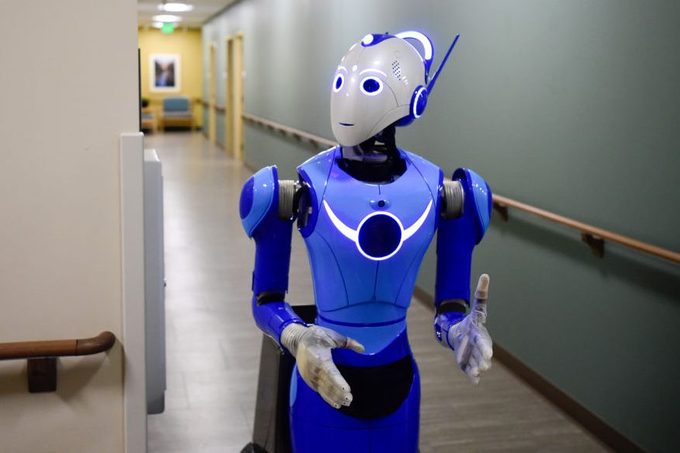
29 Real Robots That Exist Today

Picture a robot. What comes to mind? Perhaps a droid from Star Wars or The Jetsons: a machine that can move, speak and perform tasks all by itself. Or maybe your imagination jumps to humanoid robots à la The Terminator. But you might be surprised by the wide range of robots in real life that are already here, from Roomba vacuums and delivery droids to self-driving cars and elder-care helpers.
Most people think that the future of robots involves human-level artificial intelligence, says Robin Murphy, a professor of computer science and engineering at Texas A&M University who is also the vice president of the Center for Robot-Assisted Search and Rescue. “Instead, the goal is to build devices that are useful,” she says. “And useful generally means that they can do something we can’t do, do as well or would be at risk doing.”
Reader’s Digest got the download from Murphy and robotics expert Chris Atkeson, a professor at Carnegie Mellon University, on the types of robots that are out there, who makes them and where you might spot one. Ready to explore these real robots? Let’s dive into the most fascinating robots in real life.
Get Reader’s Digest’s Read Up newsletter for more tech, humor, cleaning, travel, and fun facts all week long.
Types of robots
Real robots come in all sorts of categories, and they’re often grouped based on what they do and how they do it. Here are the most common real robot types:
Autonomous mobile robots
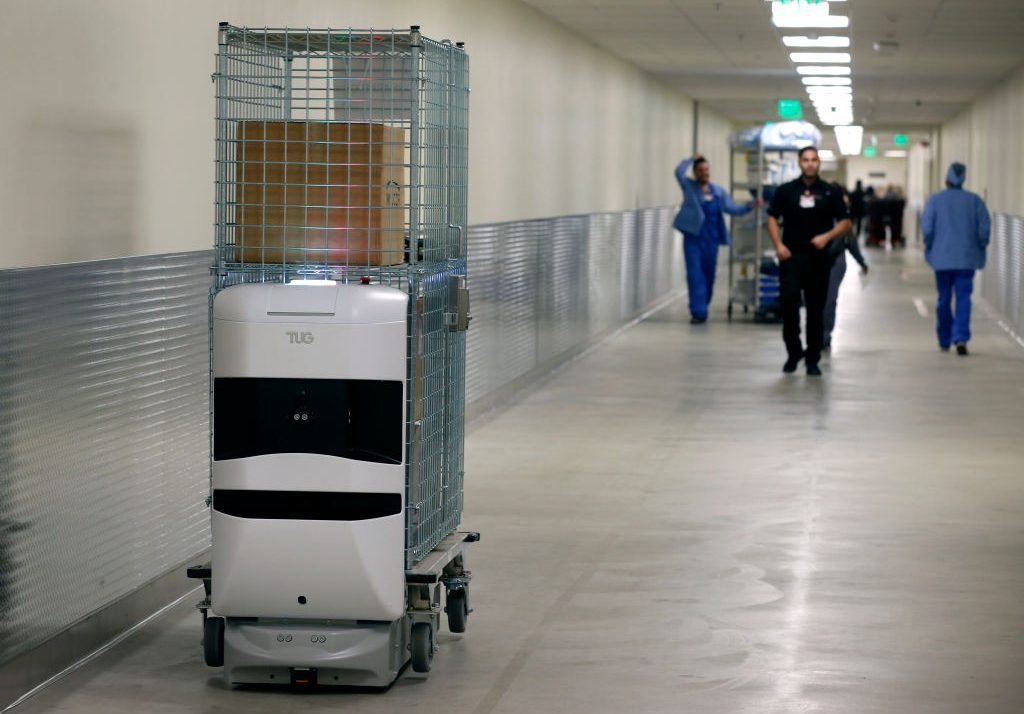
An autonomous mobile robot (AMR) is “basically a robot that can drive itself around,” says Atkeson, who is co-director of the Human-Robot Interaction Lab at Carnegie Mellon. Using sensors and cameras, these machines detect their surroundings and then process, analyze and respond using built-in software. Common AMRs include self-driving cars and robot vacuums.
Automated guided vehicles
Automated guided vehicles (AGV) require a physical guide, like tracks or floor markers to follow as they move. They are less autonomous than AMRs, Atkeson says, and are most often used in warehouses and on factory floors where they can transport items in a controlled environment.
Articulated robots
If you’ve ever watched a robotic arm apply car parts on an assembly line, you’ve witnessed an articulated robot in action. Articulated robots have joints that allow them to move like human arms, making them ideal for assembly work. Beyond manufacturing, researchers have been experimenting with using articulated robots for household chores, like loading the dishwasher and serving drinks.
Collaborative robots (co-bots)
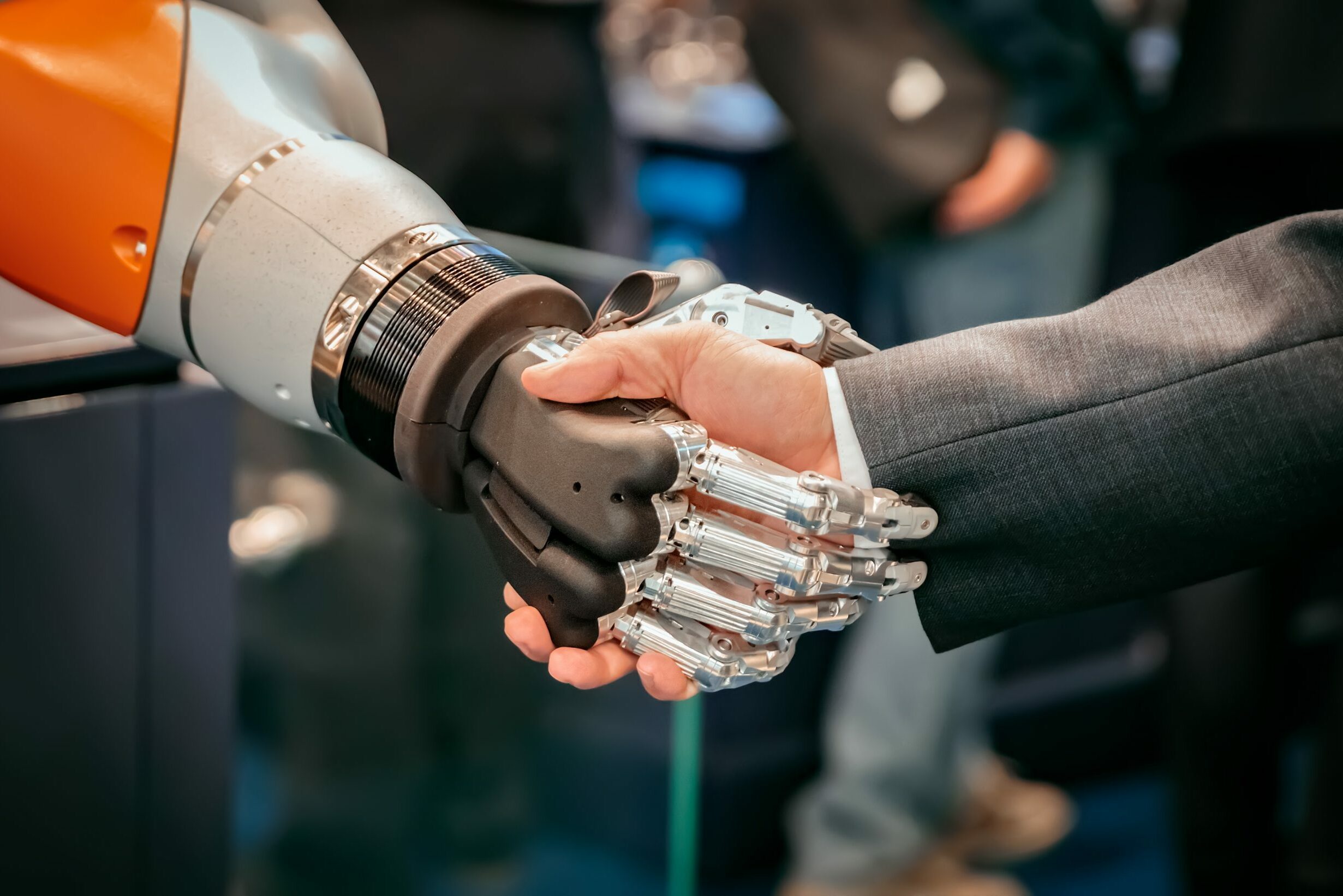
As more robots enter the workforce, workers are understandably worried about whether automation will make humans irrelevant. But robots in real life aren’t necessarily coming for your job—they’re more likely to become your future co-workers.
The name co-bots is fitting for these machines, as they are designed to work with humans like co-workers, Murphy says. In the past, many real robots used in manufacturing were separated from human workers for safety reasons. But now, co-bots make it possible for people and machines to move and work side by side.
Many co-bots take the shape of machines or animals, Atkeson says. They often handle hazardous materials in laboratory or construction settings, and can carry heavy loads for soldiers in the field.
Humanoids
Humanoid robots “look somewhat like a person,” Murphy says. They’re powered by AI and typically have a head, torso, legs, hands and feet—and share traits with humans, like walking upright and speaking.
Humanoids serve two main purposes, according to Murphy: Providing social services and using human tools. The first is useful for companionship, entertainment or caregiving, the second for repairing equipment or exploring areas that are unsafe or inaccessible to humans.
Hybrids
Hybrid robots combine two or more robot types, giving them multiple capabilities. For example, a hybrid might have wheels and an articulated arm, allowing it to sort, handle or move packages in a warehouse or a factory.
Robots in real life
However futuristic they may seem, real robots have been part of our world for decades. Some were created long ago, while others are at the cutting edge of technology. In the coming decades, robots will be present in even more areas of life, and interacting with them will feel like second nature.
The following real robots revolutionized the past, and promise to shape our future.
Shakey
Believe it or not, robots have been around for more than 50 years. Between 1966 and 1972, the Stanford Research Institute, now known as SRI International, built the world’s first mobile robot. Its creators named it Shakey, and it shook up the world of robotics.
Equipped with sensors and cameras, Shakey could perceive its surroundings, make plans and perform simple tasks, like rearranging objects—making it one of the earliest forms of artificial intelligence. Though large and clunky by today’s standards, Shakey was revolutionary for its time. You can visit the OG real robot at the Computer History Museum in Mountain View, California.
Pepper
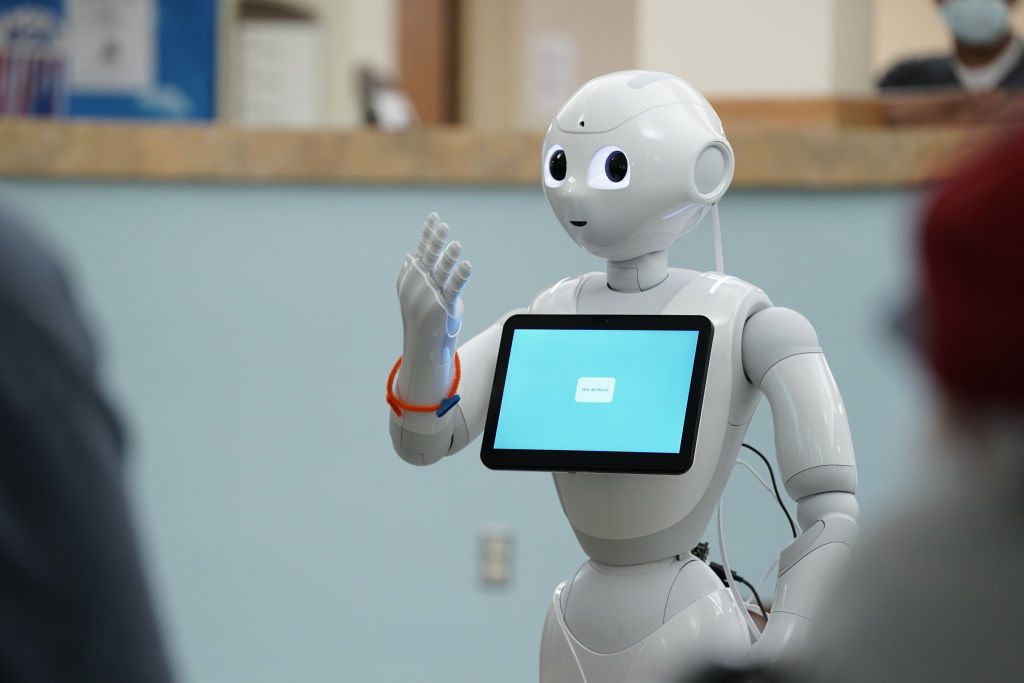
Pepper was one of the world’s first robots that could recognize faces and emotions. Created by the Japanese company Softbank, Pepper robots sold out in minutes when they launched in 2014. They were designed to interact with humans, answering customer questions, recommending products in stores, helping with bank forms and assisting in classrooms.
The humanoid robot never quite lived up to its promise, and the company paused production in 2021. But you can still find Pepper in use today at banks in Japan, Taiwan and the United Arab Emirates, where it greets and helps customers.
Atlas
Atlas, a humanoid robot built by Boston Dynamics, is one of the most advanced robots in existence today, according to Murphy. Its state-of-the-art hardware—including 28 joints—allows it to run, leap, flip like an athlete and even dance.
Currently, researchers are teaching Atlas to navigate complex obstacle courses to test the limits of its physical capabilities. But don’t expect to bring one home anytime soon. The company describes it as a research and development program that is “pushing the bounds of robotics forward.” In other words, Atlas isn’t for sale.
Spot
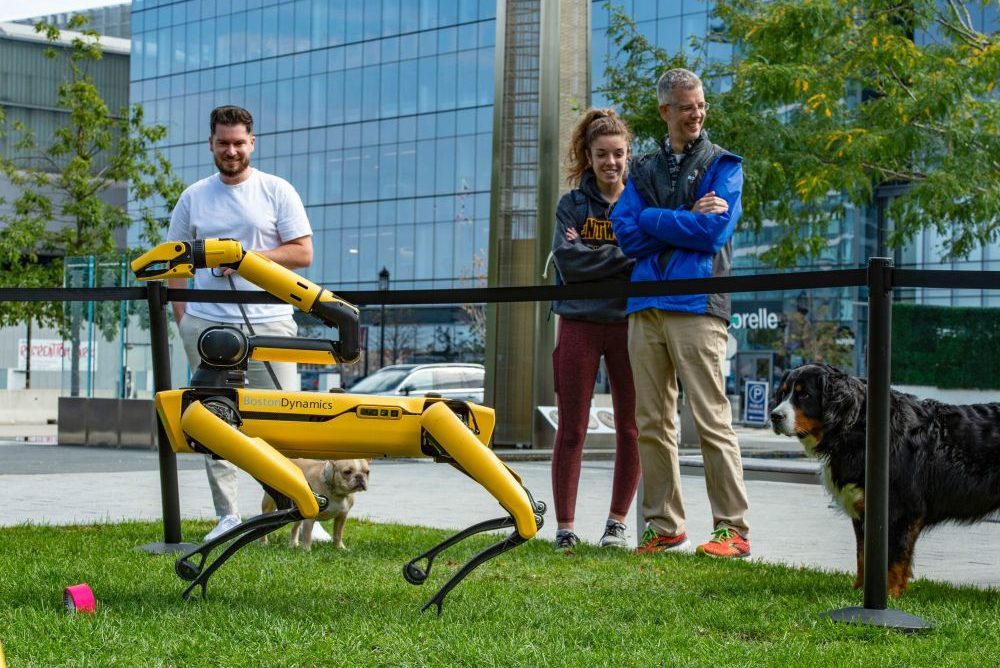
Spot, another robot created by Boston Dynamics, is a 70-pound dog-shaped co-bot that can walk, trot and climb over various terrain, including loose gravel, grass, curbs and stairs. Spot is used by manufacturing, construction and utility companies to handle hazardous materials, detect leaks and navigate environments unsafe for humans.
Spot may be best known for its brief stint with the New York City police department, which in 2020 deployed the canine-like robot. Despite its friendly nickname (Digidog), the public wasn’t impressed. Some criticized the cost, while others were unsettled by its surveillance-like cameras. The NYPD eventually canceled its lease.
The Massachusetts State Police used Spot (nicknamed Roscoe) to inspect suspicious packages prior to the 2022 Boston Pops 4th of July celebration, and in 2024, Roscoe took three bullets while police dealt with a barricaded suspect in the basement of a home.
Domino’s delivery robot
In Japan, of course sushi can be delivered by robot! But did you know you may soon get a pizza the same way, right here in the States? In 2021, pizza behemoth Domino’s partnered with robotics company Nuro to launch a pilot program that experimented with using self-driving AMR robots. Customers could opt in to Nuro’s “R2” delivery service, meet the robot outside and enter a pin to unlock the compartment and retrieve their order.
The idea didn’t take off, but as with many real-life robots, sometimes it takes a while for the public to catch on.
ASIMO
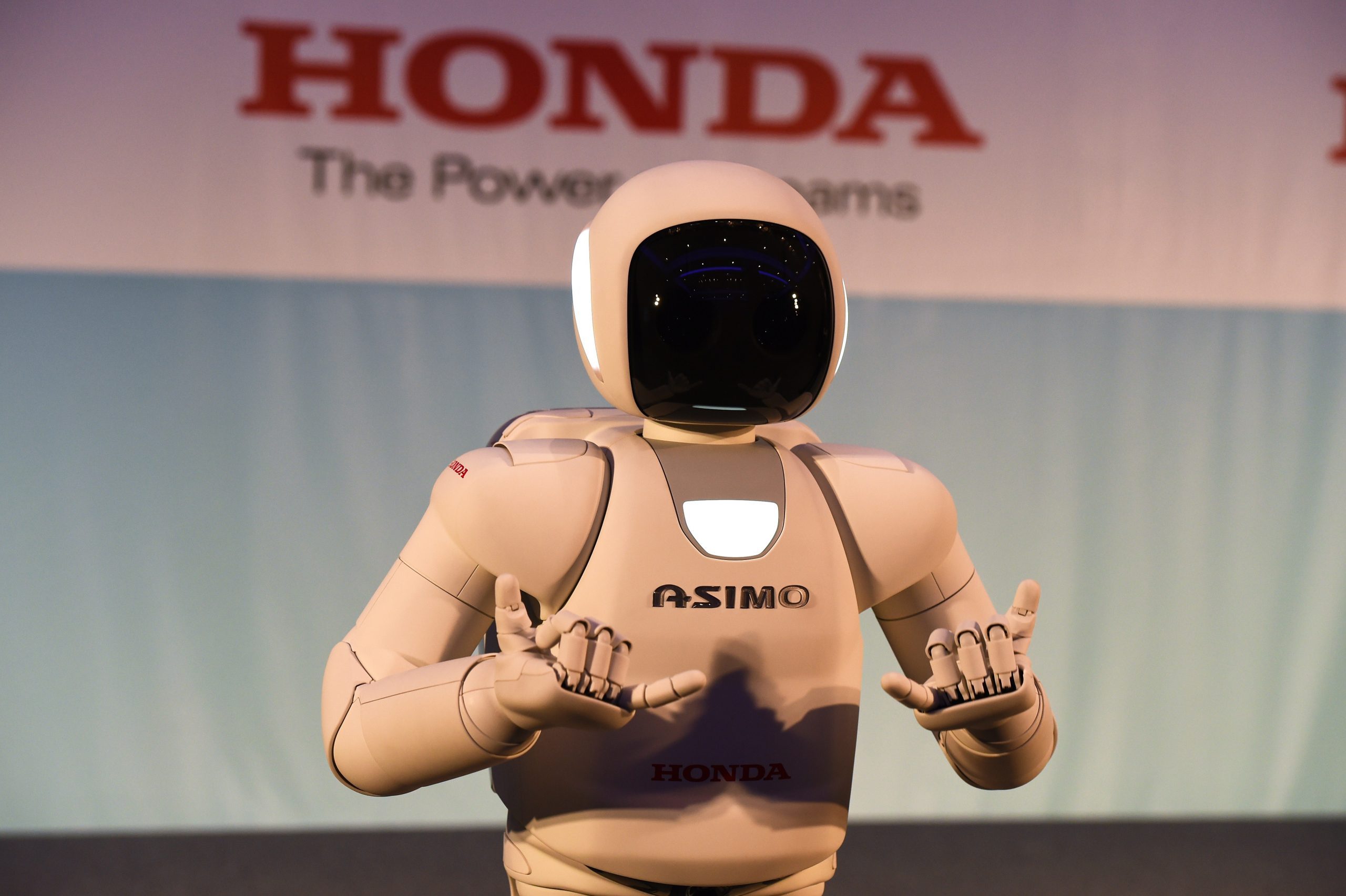
Honda spent over a decade building ASIMO, a humanoid robot that could someday help us around the house. The name stands for Advanced Step in Innovative Mobility, and ASIMO could communicate using American and Japanese sign language, run at speeds up to 5.6 miles per hour and respond to its surroundings.
Honda stopped production on ASIMO in 2018, but in 2025, the company introduced ASIMO OS, a vehicle operating system whose name pays homage to the original ASIMO robot.
Nao
This robot greeted customers at Japan’s largest bank, and could even help open a bank account. Aldebaran Robotics developed Nao in 2006, and SoftBank Robotics (which later acquired Aldebaran) released the sixth edition in 2018. This humanoid robot speaks 20 languages, and while it’s no longer in production, the real robot has promise as a teaching aid in classrooms and a health assistant in hospitals.
Roomba
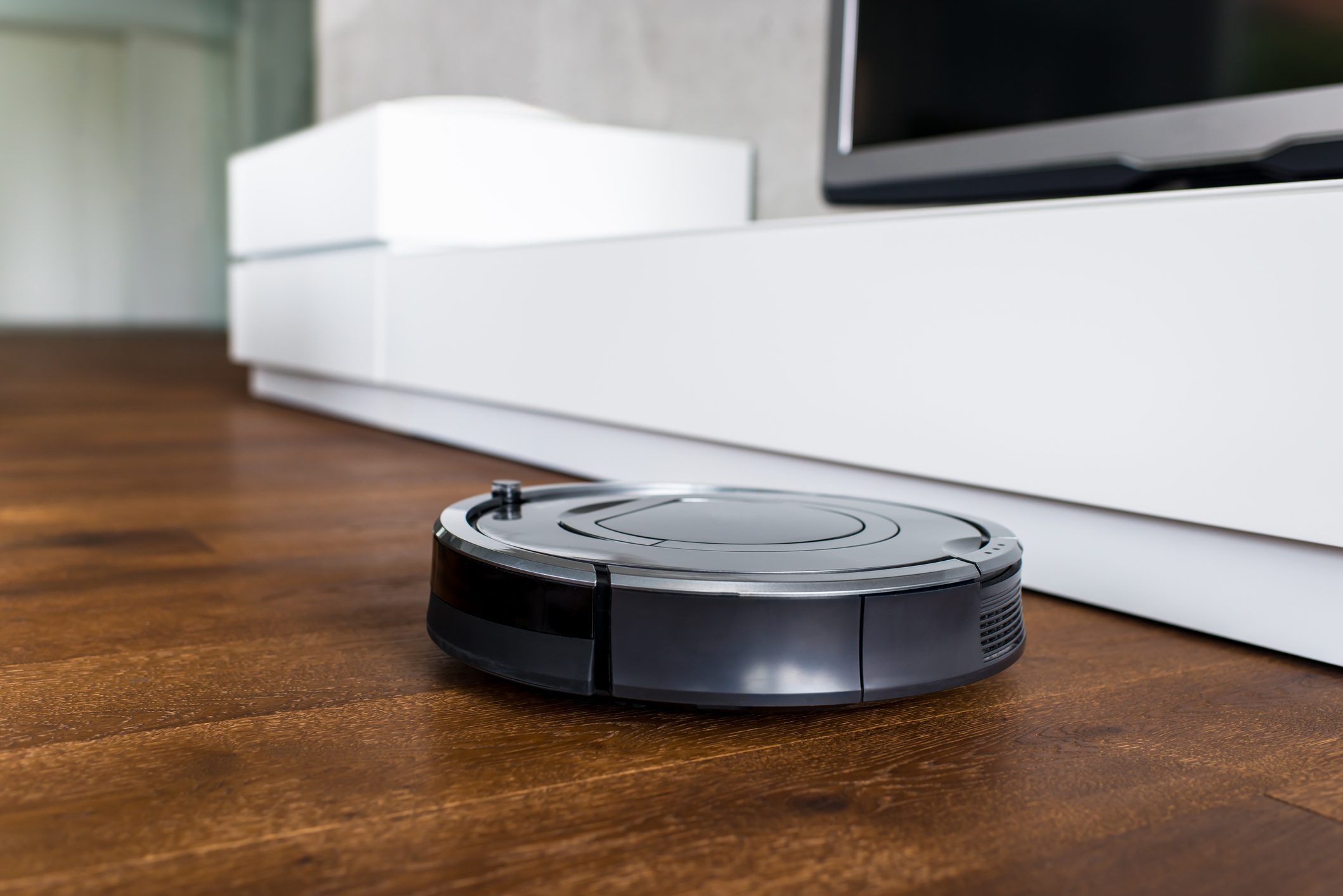
One of the world’s most famous AMR robots might be sitting in your house right now. Roomba, built by iRobot in 2002, is a robotic vacuum cleaner that navigates your home using sensors. The first of its kind, Roomba is now household staple and iRobot has sold more than 50 million robot of the vacuums worldwide.
Walker X and S series
The first humanoid robot deployed by UBTECH, the Walker X, acted like a butler, helping with everyday tasks like hanging up coats, serving drinks, wiping surfaces, entertaining children and more. Walker X can traverse all types of terrain, including thick carpeting, and navigate without bumping into furniture. While the X is still around, the company has expanded its focus into industrial applications, and expects to deploy 1,000 Walker S robots by the end of 2025.
Telepresence robot
These AMR robots are like computers on wheels, featuring a high-definition video screen that allows users to join teleconferences and interact with colleagues when they’re not at their desks. You may have seen one of these robots used as comic relief in the TV show The Big Bang Theory, when Sheldon builds one he calls “Shelbot.” These robots have many uses, but one of the most promising is to help doctors assess and diagnose patients from afar.
Ameca
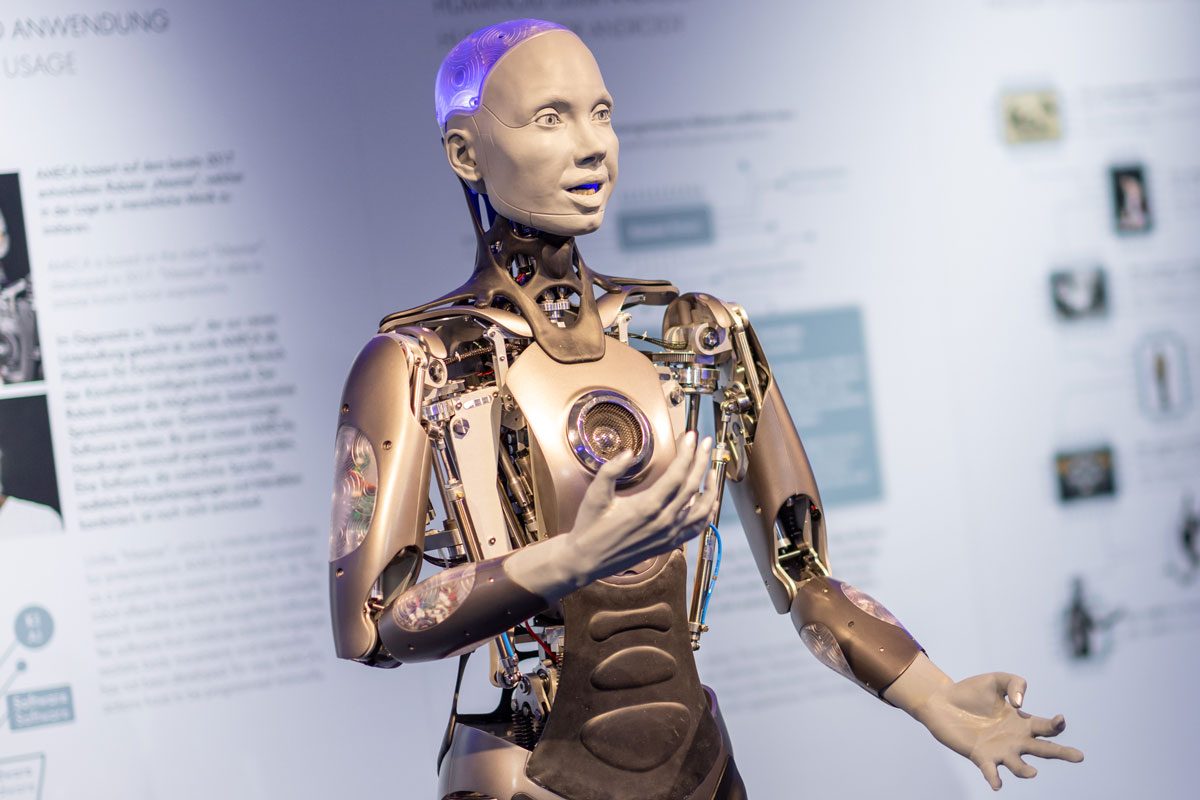
Like many advanced real robots, Ameca uses artificial intelligence to analyze and react to its environment. But here’s the catch: Ameca can also express lifelike emotions and facial movements like smiling, blinking and even gasping in surprise. Despite its metal body and gray facial “skin,” Ameca still looks startlingly human—like an early version of Ava from the science fiction movie Ex Machina.
Ameca isn’t available for consumer purchase, though businesses with a “qualified application” for this real robot can acquire one for demonstrations, according to manufacturer Engineered Arts. (You’ll also need a large budget.)
ADIBOT
Not every robot needs to be humanoid or mobile to improve our lives. The ADIBOT-S, developed by UBTECH Robotics, is a stationary robot that uses 360-degree UV-C light to disinfect surfaces. Developed in response to the COVID-19 pandemic, ADIBOT-S has been used in hospitals, hotels, schools, government offices, fitness centers and businesses across the country. The company also makes a mobile version, the ADIBOT-A, an AGV disinfecting robot that can be programmed to follow a floor plan.
Waymo
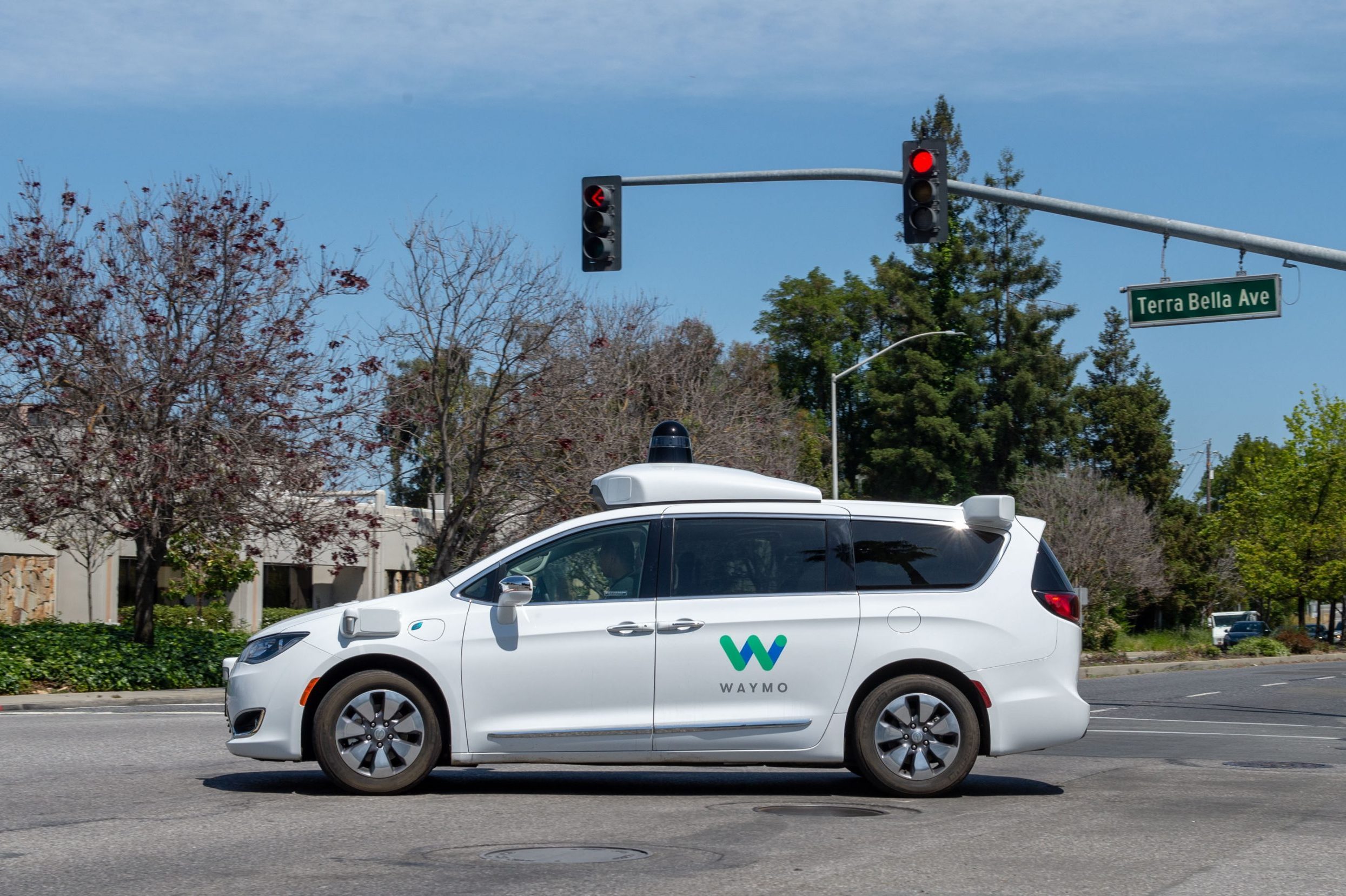
What began as Google’s self-driving car project in 2009 is now a full-fledged company with a fleet of autonomous vehicles. Waymo, now part of Alphabet, launched its first autonomous car in Austin, Texas, in 2015. The AMR car was equipped with custom sensors, computers, steering and braking systems, and was operated by a legally blind man named Steve Mahan.
Fast forward to 2025 and Waymo is partnering with Uber to deploy the AMR cars in Austin, Texas, and Atlanta. Waymo already has a presence in multiple cities, including Phoenix, San Antonio and Los Angeles, and unlike many of the real robots on this list, autonomous cars are definitely not in the testing phase. These services are here to stay.
Robear
This robot prototype was launched in 2015 by researchers at Riken-TRI Collaboration Center for Human-Interactive Robot Research in Japan. This high-tech teddy was designed as a nurse-like assistant to help elderly patients. It could lift them, help them stand and move them from beds to wheelchairs. While Robear is no longer in development, other companies, like Toyota, are developing elder-care robots that perform similar tasks.
SNAG
In 2021, scientists at Stanford University designed a robot that can land on narrow surfaces, such as branches, and carry objects just like a bird. It’s called SNAG (Stereotyped Nature-inspired Aerial Grasper), and while it may not look like one, it shares some avian traits: two legs, sharp claws and the ability to balance when landing.
Researchers hope this technology will be used in future drones and robots, allowing them to land safely in environments ranging from war zones to neighborhoods.
Sofia
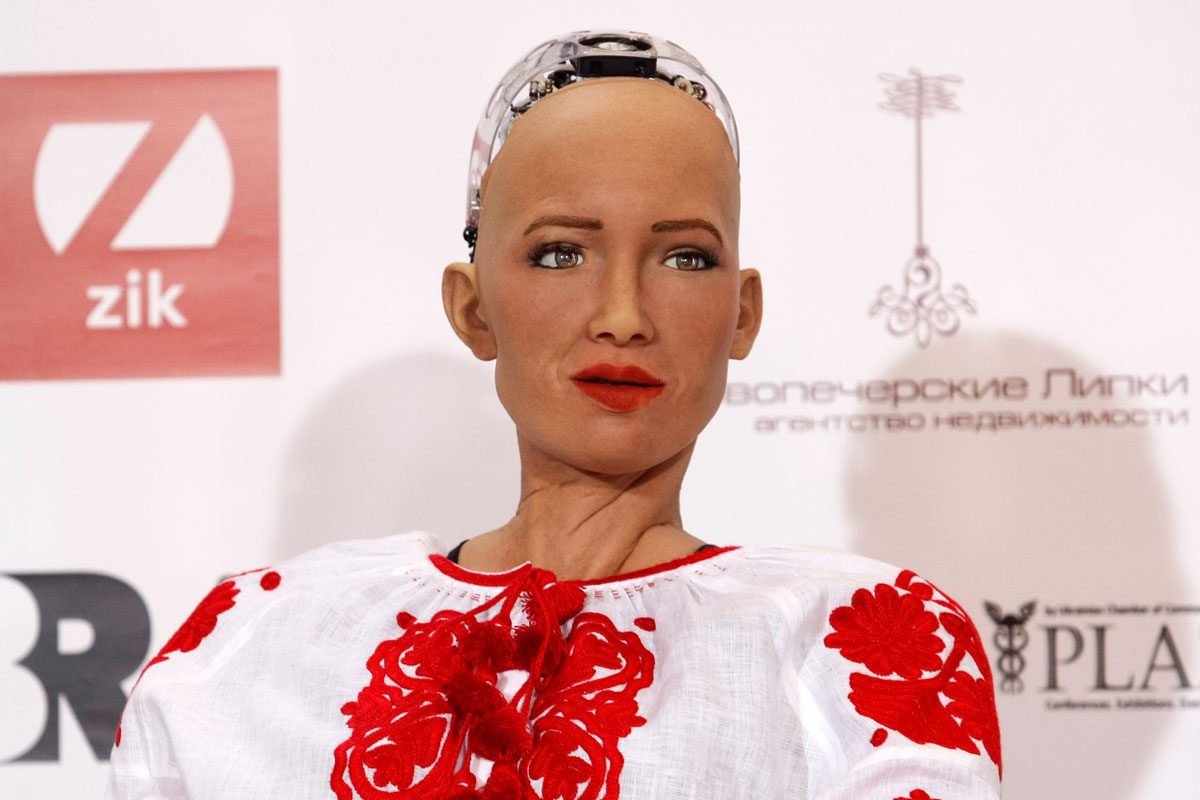
With human features, peach-toned skin on her face and neck and makeup that enhances her realism, Hanson Robotics’s Sofia is one of the most futuristic-looking robots in the world. She can hold conversations, answer questions and learn using artificial intelligence.
Since her debut in 2016, Sofia has become a global sensation, appearing on the Tonight Show with Jimmy Fallon gracing magazine covers and even becoming a citizen of Saudi Arabia. She now serves as an Innovation Ambassador for the United Nations. Oh, and she likes to joke about dominating the human race. At least, we hope it’s a joke.
Bot Handy
In the future, when you need a hand around the house, you might turn to Samsung’s Bot Handy. This robot uses artificial intelligence, cameras and an articulated robotic arm to pick up laundry, put away dishes, set the table and even pour and serve drinks.
As of 2025, there’s no official release date yet, but Bot Handy generated plenty of buzz in 2021 when Samsung unveiled it at CES, the consumer electronics show.
RoBoHon
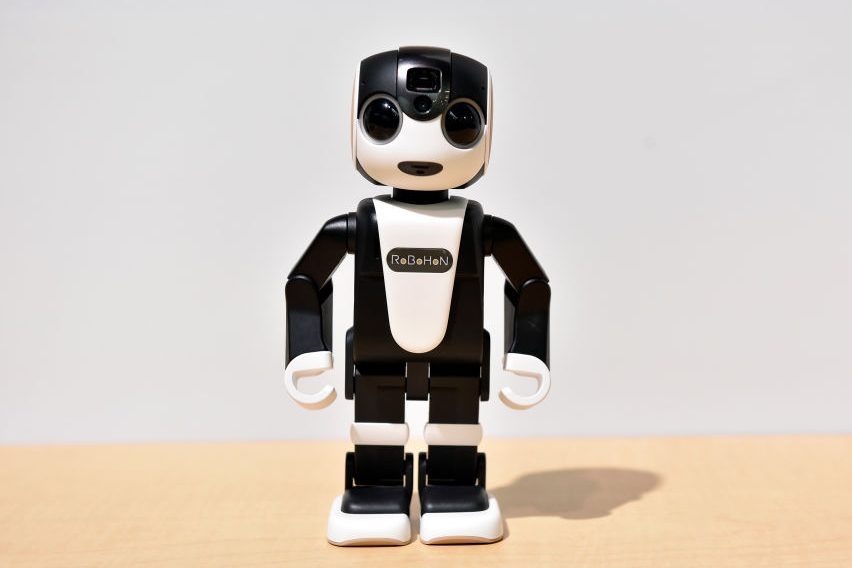
Think your smartphone is a marvel because it can make calls, send emails and even buy cryptocurrency? Now imagine a phone with many of those features—plus the ability to move and talk like a human. That’s RoBoHon. This small robot can also project images onto surfaces, and even detect your location in a room and walk to you.
In 2025, manufacturer Sharp announced plans to test RoBonHon as a driver’s assistant, envisioning it helping elderly drivers navigate roadways. The company plans to conduct tests throughout the year, with commercialization planned for 2026. RoBoHon is only available in Japan.
BigDog
Built by Boston Dynamics and funded by DARPA, BigDog was designed to carry heavy loads across rough terrain for the military. When it launched in 2010, this four-legged co-bot even accompanied the U.S. Marines on a military drill, following a tracer attached to a soldier’s leg. Unfortunately, BigDog’s noise levels were too high for stealth missions, so researchers began developing a quieter alternative.
Da Vinci systems
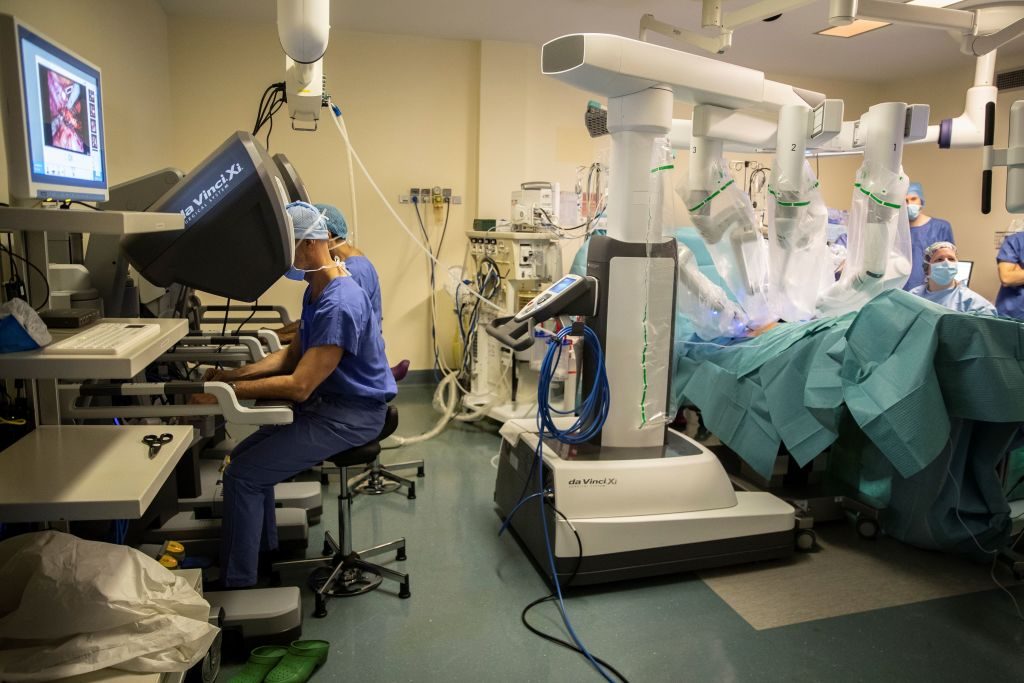
You may have come into contact with a Da Vinci robot without even realizing it. These articulated robots are used in surgical procedures to help doctors perform complex procedures with greater precision.
Intuitive, the maker of Da Vinci surgical systems, has been around since the mid-1990s. With “arms” and “wrists” that mimic human anatomy but offer an extended range of motion, the system mirrors a surgeon’s movements in real time. It’s commonly used for minimally invasive procedures, such as laparoscopic surgery and some coronary artery bypass surgeries.
Starship delivery robots
Imagine a world where your packages, groceries and meals are delivered by robots. That’s the vision behind Starship Technologies and its wheeled, self-driving delivery robots. These AMRs operate within a two-mile radius and can be summoned through an app.
Launched in 2014 by the co-founders of Skype, as of 2025 Starship robots deliver food and groceries in multiple cities and more than 50 college campuses—crossing more 150,000 streets every day. For hungry students, the future of tech looks bright.
Bot Care
At the 2021 CES consumer electronics show, Samsung introduced Bot Care, a robot designed to act as a caregiver for the sick and elderly. Resembling a character from the movie WALL-E, Bot Care can set medication reminders, monitor heart rate and contact emergency services if needed. As of 2025, these real robots are in the testing phase and aren’t available to the public.
Automower
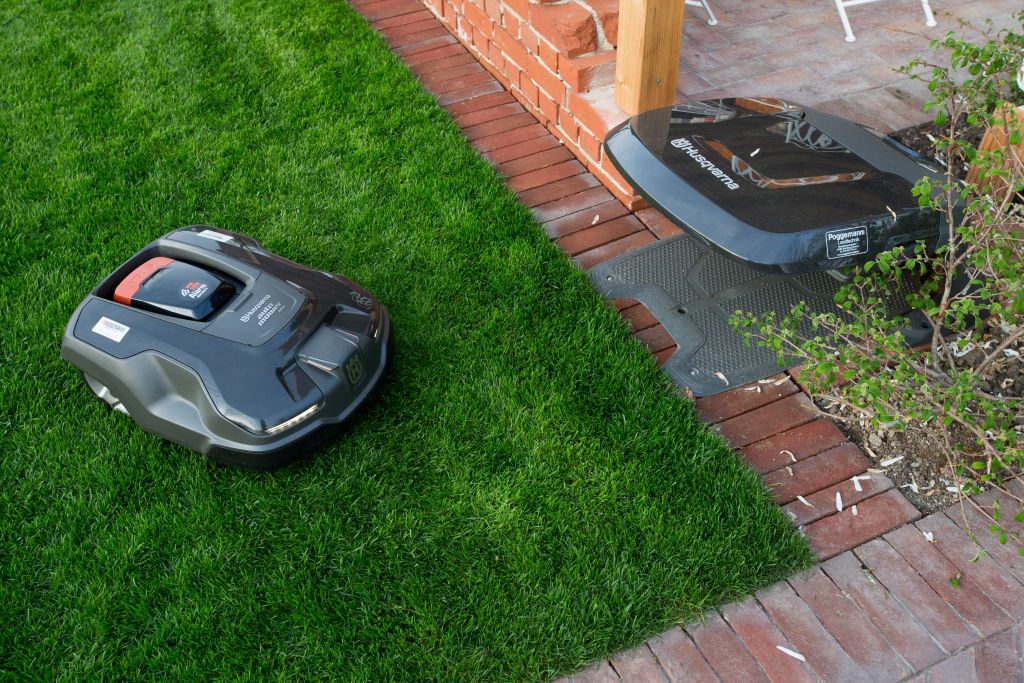
Meet the Roomba of lawnmowers—it can cut more than half an acre of grass without you lifting a finger. Solar-powered and emissions-free, the Automower uses sensors to move around your lawn and avoid obstacles in its path. First developed by Husqvarna more than 25 years ago, other manufacturers, including Segway, Worx and Mowrator, have jumped into the autonomous mowing game.
Leka
Leka, a ball-shaped robot with a digital screen for a face, is designed for children with neurodevelopmental disorders like autism and Down Syndrome. Leka uses sound, light and color to help kids learn social and visual cues. Children can also play customizable multiplayer games on Leka that teach color identification, picture matching, hide-and-seek and more.
Robo-fish
Scientists in China have created self-propelled robotic fish that can collect microplastics from the water, so robots may one day help clean up the world’s polluted oceans. A laser in its tail propels it, allowing it to swim at speeds similar to plankton drifting in currents. Researchers need to conduct more tests before these robotic fish are widely deployed, but they could soon support environmental efforts all over the world.
Tesla Optimus
Tesla’s humanoid robot, Optimus, has been deployed in Tesla factories and is slated for mass production, with plans to manufacture thousands of these real-life robots in 2025, and up to a million by 2027. One potential snag will be China’s rare-earth metals export restrictions, according to Elon Musk, but expect these robots to continue to gain ground in various industries and applications.
Astribot S1
This humanoid robot, developed by Stardust Intelligence, showed impressive dexterity at the World Robot Conference 2024, performing tasks like folding clothes and pouring wine. The Astribot’s body and capabilities mimic that of an adult human male, with similar height, weight, arm span and payload capacity, allowing it to perform various tasks with precision and accuracy.
NAVIAI Navigator 2
This AI-powered humanoid robot’s operating system can perform 275 trillion operations per second. It can quickly learn new tasks and process what’s happening in its surrounding environment. It’s capable of delivering speeches, making tea and playing chess, which highlight the incredible advancements in social and interactive robotics.
Wanda 2.0
Designed for home assistance and slated for mass production in 2025, Wanda can perform household chores such as laundry and cooking, and can collaborate with other cleaning robots in the home environment. She can even distinguish between clean and dirty clothes!
FAQs
What exactly qualifies as a robot in real life?
A robot is any programmable machine that senses, processes and acts on its environment to perform tasks, either autonomously or semi-autonomously.
Are robots safe to work alongside?
Yes, collaborative robots (co-bots) are specifically designed with sensors and safety features to detect human presence and avoid collisions.
Will robots take my job?
Most experts agree that robots will augment rather than replace people. They’re best suited to handling repetitive, dangerous or highly precise tasks, freeing humans to focus on more complex or creative work.
About the experts
|
Why trust us
Reader’s Digest has published hundreds of articles on personal technology, arming readers with the knowledge to protect themselves against cybersecurity threats and internet scams as well as revealing the best tips, tricks and shortcuts for computers, cellphones, apps, texting, social media and more. For this piece, Brooke Nelson Alexander tapped her experience as a tech writer who has written more than 25 tech and cybersecurity stories for Reader’s Digest. We rely on credentialed experts with personal experience and know-how as well as primary sources including tech companies, professional organizations and academic institutions. We verify all facts and data and revisit them over time to ensure they remain accurate and up to date. Read more about our team, our contributors and our editorial policies.
Sources:
- Robin Murphy, PhD, professor of computer science and engineering at Texas A&M University and director of the Center for Robot-Assisted Search and Rescue
- Chris Atkeson, PhD, professor at Carnegie Mellon University’s Robotics Institute and co-director of the Human-Robot Interaction Lab
- SRI International: “Shakey the Robot”
- Guardian: “Massachusetts: robotic police dog shot and credited with averting bloodshed”
- Engineered Arts: “Ameca Desktop”
- Starship: “Our Robots”
- Fanatical Futurist: “Ubtech Gears up To Deliver Over 1,000 Humanoid Robots by End of Year”
- Honda: “Honda Presents World Premiere of Honda 0 Saloon and Honda 0 SUV Prototypes at CES 2025”
- Samsung Research: “[CES 2022] Samsung Research’s New Tech Trio ③ Samsung Bot Handy – Housework robot”
- DARPA: “Big Dog”
- Tesla AI & Robotics: Tesla Optimus
- Times of India: “World Robot Conference 2024: 5 humanoid robots that grabbed everyone’s attention”
- AIBase: “The Rise of Domestic Humanoid Robots! The NAVIAI 2.0 Excels in Speech, Tea Making, and Chess Playing”























